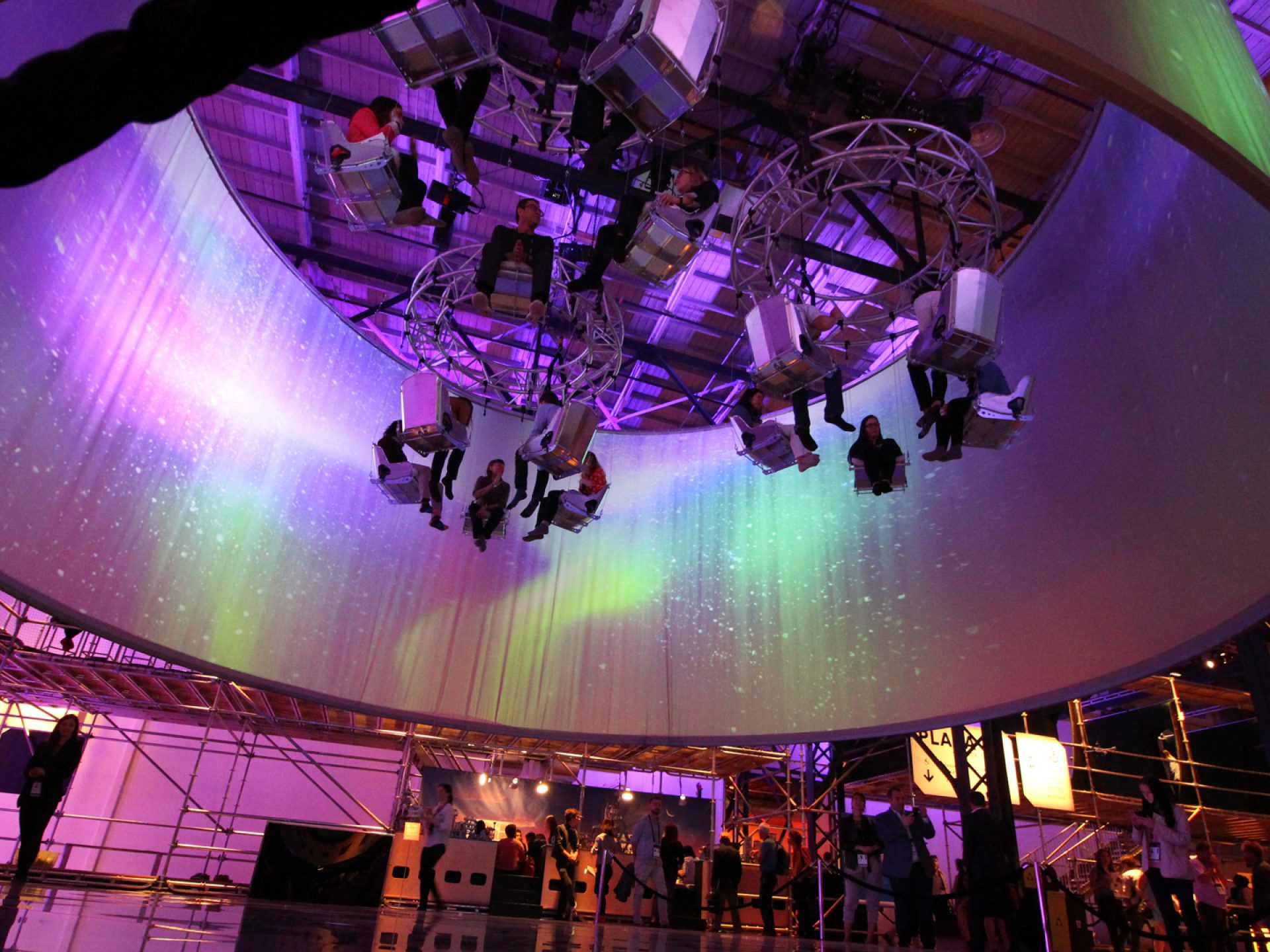August 12, 2019
Buzzword Breakdown: The “Festivalization” of Meetings

For years now, the made-up word of “festivalization” has bounced around the meetings and events industry and built steam. A quick online search shows no shortage of headlines on industry blogs and trade publications:
- Is “Festivalization” the Next Big Thing in Live Events?
- Survey: ‘Festivalization’ of Meetings a Growing Trend
- Travel Megatrends 2017: Festivalization of Meetings and Events
I’ve mostly avoided joining the chorus, chuckling instead at perspectives that barely scratch the surface of the concept and overlook its implications for convention center owners and operators. I’m amused because I not only attend the music festivals the buzzword references – I perform at them. By day I’m an architect, but by night I write, produce and perform electronic music under the Longer Days name.
When I’m not at the drafting table or working on my upcoming EP, I’m at shows like Electric Forest in Michigan or Dancefestopia in Kansas City, rubbing shoulders with music fans or taking the stage and entertaining them. It’s impossible to shut down the placemaking part of my brain in these moments. I can’t help but draw lessons from them that apply to my convention center work in cities like Anaheim and Calgary. You won’t find those lessons in any of the headlines above. What industry consultants and commentators miss are the design principles that make a festival fun in the first place.
Doing Away with Physical Barriers
Architects are taught early on how to program a space by drawing clear lines between areas. Meeting rooms versus ballrooms, back of house versus front, and so on. These divisions feel orderly and sensible at first, but they make it harder for a convention center to easily flex and accommodate non-traditional formats. And if there’s one thing the “festivalization” trend implies, it’s a craving for new formats.
Unorthodox events like C2 Montréal have tapped into the demand. By virtue of hosting the conference in an empty river-front warehouse, the show’s designers had few physical barriers to limit them. Multiple group meetings happened feet from one another with no dividers. If you think this sounds crazy, 1) it’s tame compared to some of the event’s more wild “Labs” and 2) it’s no different than the organic conversations that unfold in busy coffee shops every day.
This is the sweet spot for convention center operators and owners. Not the stunts per se, but the way festival spaces do away with tidy boundaries. Much of our work designing convention centers around the world involves breaking down giant boxes into more intimate and human-scaled areas. We did it in San Antonio by connecting the two lobbies of its Henry B. Gonzalez Convention Center with a winding path full of nooks and casual meetup spots.
Designing for Random Connections
Think about some of the most memorable and unexpected connections you’ve made. Chances are they didn’t happen in a meeting room. Crossroads people can’t avoid – spaces like office kitchens and campus quads – increase the likelihood of serendipitous run-ins.
We’re in the early stages of applying this principle in Calgary. Unlike most convention centers, the BMO Center is already part of a massive festival: the Calgary Stampede. Held every summer, “The Greatest Outdoor Show on Earth” attracts more than a million people for 10 days of rodeos, concerts and other entertainment.
Our challenge is to design an expanded convention center that can attract major international conferences to co-mingle with the Stampede. It’s a problem convention centers across the continent would love to have – and we can’t wait to design the spaces that bring together cowboys and cowgirls with out-of-town business leaders.
The Silence in Between
Music, the French composer Claude Debussy famously said, is the silence between the notes. Designers of music festivals embrace this mindset, filling lulls in their day-long schedules with more casual content. Esports tournaments also span entire days and have plenty of time in between main stage matches – and convention centers are taking notice. Look no further than Esports Stadium Arlington – an esports venue repurposed out of convention center space. Our designs for the innovative venue included transforming the lobby into a gamer gallery. Full of public game stations and a smaller competition stage, the space fills with esports fans throughout the year, regardless of whether a major tournament is happening.
Where Do We Go From Here?
The mecca of business + entertainment festivals, South by Southwest (SXSW), has grown from humble roots with crowds in the hundreds to the corporate behemoth of today. It happened organically in many ways – and it’s no coincidence it all started with a concert-centric format. A conference portion and other festivals (interactive, film and comedy) still benefit from the musical performances that span the two-week event.
Not every event can or wants to reach SXSW-level proportions. Instead, they can learn from festival-first events, adapting at a smaller scale the principles that make these extravaganzas so popular in the first place: minimizing boundaries, encouraging chance encounters and producing casual content. Each plays a part in creating an encore-worthy convention environment.
♦♦♦
*Cover photo “C2 Montreal 2017” by CarlosPacheco is licensed under CC BY 2.0
Lorem ipsum dolor sit amet consectetur, adipisicing elit. Non facere corporis et expedita sit nam amet aut necessitatibus at dolore enim quis impedit eius libero, harum tempore laboriosam dolor cumque.
Lorem, ipsum dolor sit amet consectetur adipisicing elit. Illo temporibus vero veritatis eveniet, placeat dolorem sunt at provident tenetur omnis, dicta exercitationem. Expedita quod aspernatur molestias eum? Totam, incidunt quos.